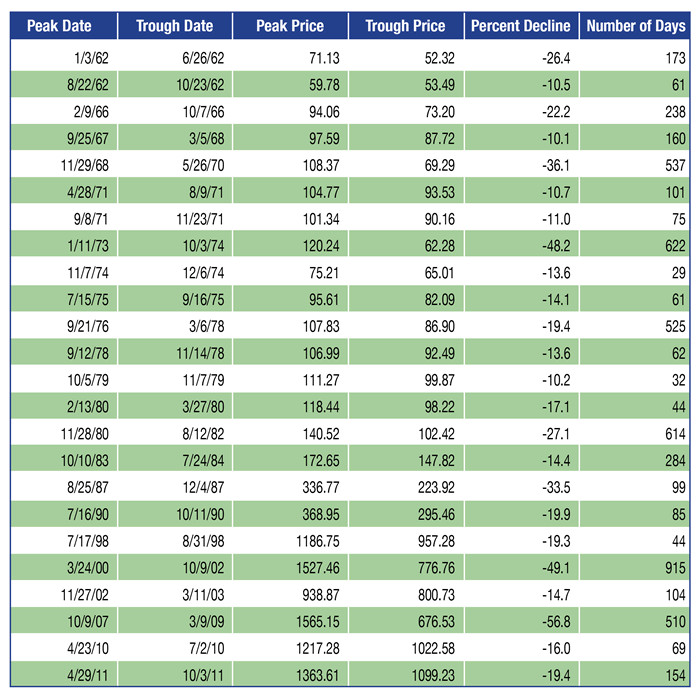Don’t Fight the Fed
 As the year began, our 2014 forecast for US stocks called for sub-par returns. We did not anticipate a losing year, but expected gains in the low-to-mid single digits. Our thinking was that valuation was getting a little stretched coming off of two big years in 2012 and 2013, up almost 50% cumulatively. In addition, we thought a rising interest rate environment would make it more difficult for stocks to continue moving higher.
As the year began, our 2014 forecast for US stocks called for sub-par returns. We did not anticipate a losing year, but expected gains in the low-to-mid single digits. Our thinking was that valuation was getting a little stretched coming off of two big years in 2012 and 2013, up almost 50% cumulatively. In addition, we thought a rising interest rate environment would make it more difficult for stocks to continue moving higher.
So far, neither forecast is on track as the US market is up 8.35% through nine months and interest rates have moved lower. But we hold steadfast to our original forecasts. If anything, valuations for stocks have worsened a little. Stocks are not expensive, but they are trading above their long-term valuation averages on many measures, which hasn’t happened since before the financial crisis. There is little doubt that stocks are moving higher because of the Fed.
There is an old Wall Street adage: “Don’t fight the Fed.” Not to oversimplify, but this aphorism means that when the Fed has an “easy money” posture, investors should own stocks and not worry too much about valuation. When they tighten money supply, investors should sell stocks. The theory goes that corporate earnings, and therefore stock prices, will rise with more money in the system to purchase goods and services. Unfortunately, the opposite is true, which is why investors tend to sell stocks when there is even a hint of tighter monetary policy. Even though the Fed has reigned in some of the easy money by ending QE3, the market has not seemed to care. When the Fed addresses the Fed Funds rate, which currently sits near zero, the market will surely pay attention.
S&P 500 Corrections & Bear Markets Since 1960

*Corrections are declines of 10% or more. Bear Markets are declines of 20% or more.
Source: Standard & Poor’s Corporation and Haver Analytics
Before that happens, the Fed will need to see more evidence that this economy can grow on its own without the artificial stimulus that near-zero interest rates provide. There is a growing camp within the Fed that believes the economy is already there. As internal pressure increases to raise the Fed Funds rate, Janet Yellen will also need to consider the reality of needing some ammunition to fight the next recession or bout of inflation, whenever that may be. The Fed Funds rate has proven to be their most effective tool, and unless they move off of this free money mentality, it will not be available to them when it might be needed the most.
When it appears to the market the Fed is ready to increase rates, stocks could be in for some rougher days. The stock market has not experienced a correction, defined as a 10% drop from peak to trough, since October of 2011, or 35 months. Considering that the market, on average, experiences a correction every 16 months, one could easily argue that we are due. Trying to predict the timing of these events has proven to be nearly impossible, and there is no real academic evidence showing it can be done. But investors, both professional and amateur, insist on trying.
On the prior page, we have included a table chronicling the history of corrections in the US since 1960. Over the course of almost 54 years, the S&P 500 experienced a correction 24 times (just over one every two years), as compared to the long-term average of one every 16 months. As the data shows, we have experienced fewer corrections in recent years. When we look at just the last 30 years, the market has corrected just nine times, which is one every 39 months. But, during the most recent 30 year period, investors saw 3 of the worst 5 markets in the entire 54 years studied. Without question, market volatility has increased more recently with exaggerated moves both up and down. The main culprit is technology, which makes it easier to move large amounts of stock in nanoseconds at virtually no cost. Without commenting on the virtues of the effects of technological change to the stability of the market, it does seem unlikely that “progress” will stop on this front. So, what is one to do about the obvious threat this increased volatility brings to portfolios?
Ted Hart has penned an article in this newsletter that addresses what our firm believes to be the best defense against a market correction. It is a strategy we plan on employing if market volatility increases significantly. Client portfolios should be at least partially protected from a significant downturn if the conditions are present for implementation of this strategy. Moreover, the strategy does not call for massive selling in the portfolio. Instead, we will purchase a security that will increase in value with an increase in volatility. In this way, we will avoid the perils of market timing and at the same time protect the portfolio from large downturns in the market.
There is no question that a market correction will come, and probably soon. Corrections, in and of themselves, are not always bad. Many look at them merely as buying opportunities if the economic fundamentals support it. Hardesty Capital Management is firmly on that side of the argument at the moment. We also believe that it makes sense to try to protect our clients from large market swoons by taking advantage of the new level of volatility technology brings with it. Until the Fed changes its posture, though, the market should continue higher.
500 Mini-Corrections Since 1960

*Corrections that fell short of 10% Source: Standard & Poor’s Corporation and Haver Analytics



